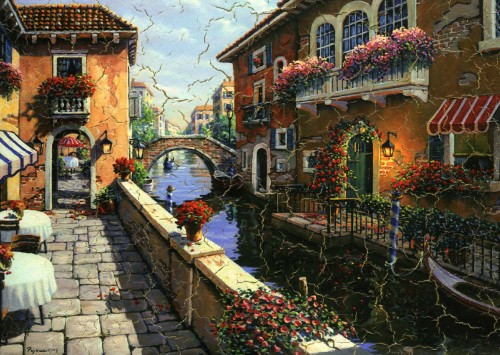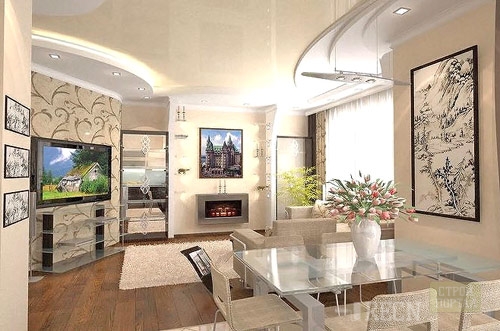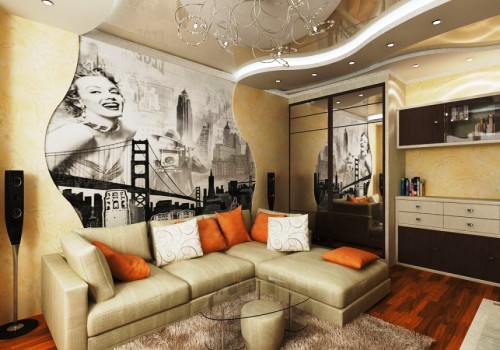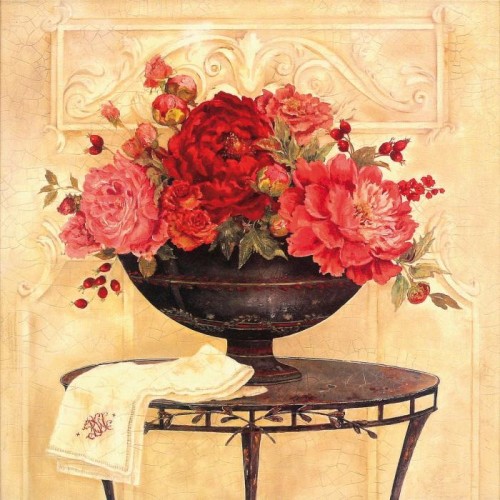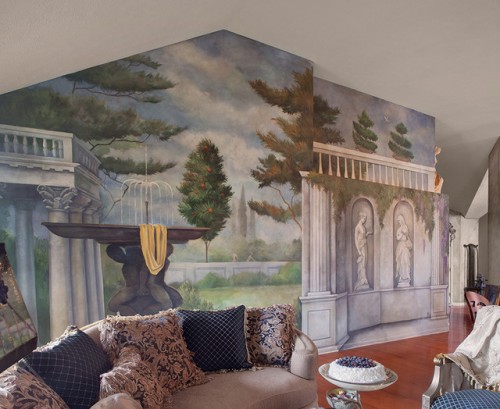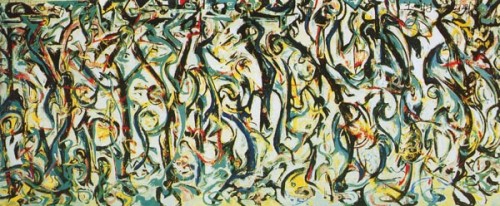
Frescoes in the interior of the living room Walls
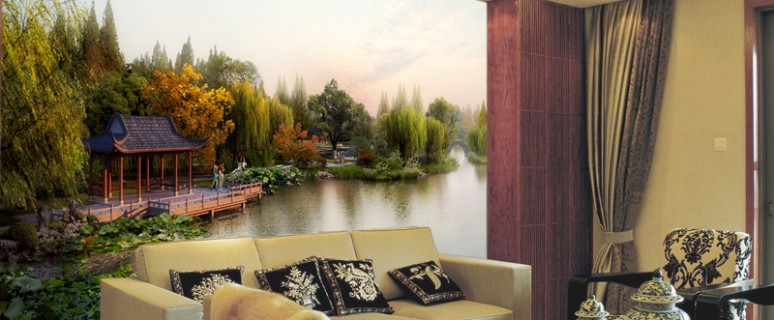
The living room is a room that is the first to attract visitors. And in order to immediately set the tone style of the whole house, you can use the trim in the frescoes. They will make the room unique and stylish.
Content
Frescoes in the interior of the living room
Types of frescoes in terms of quality
In the manufacture of frescoes, various materials are used, it all depends on what its purpose is:
- On a sandy basis - most often they are used precisely to decorate the living rooms, and they are based on a flieslinic cloth. A fine-grained plaster is added here.
- On plaster - elastic plaster, which is used in the manufacture of frescoes, is moisture resistant and is not modified under the action of sunlight. Therefore, bright colors do not lose its juiciness over time, in addition, such frescoes in the interior of the apartment will add moods.
- On the phlizelin-based basis, the suppliers of these mall usually protrude Italians, and the price of them can very much, it all depends on the manufacturer. In the interior, they look aristocratic, this effect is achieved thanks to a special plaster, which is applied to the fliesline base. They are glued in the same way as both wallpapers on the same basis. If desired, manufacturers can create such a fresco "under ancient".
- Craquelo - Thanks to this technique, images with ancient effect are created. It is achieved at the expense of marble crumb, which creates small cracks in the drawing. Good suitable for ampir style in the interior.
- Elastic frescoes - they are made on the basis of fiberglass mesh. Decorative plaster is applied to it. The main feature of this kind of frescoes in the interior is that they can be done on not perfectly smooth surfaces, ceiling, arke or corners. For the price, this kind of frescoes are quite accessible and work is performed within a few days.
- On canvas are the most environmentally friendly frescoes. They are based on natural materials: sand, lime, cotton and others. And they are made manually. The most elite is the frescoes that customers from Italy are performed to order, so they are very expensive. After all, one work must be performed at least a month.
- On a rigid basis - polymeric material is taken as the basis and attached to the wall with the help of holders. Its dimensions are limited and externally resembles a picture. In the manufacture of it is bordered by chips, and then, visually the fresco looks like an antique product. In terms of cost - somewhere in the average range.
- On a self-adhesive basis, these frescoes glued only on a smooth surface, and the basis of the base without fabric and sand.
- Digital - these frescoes for the living room can be created using digital technology. This is the most affordable type of frescoes, besides, not expensive. And fast in circulation, it is enough just to remove the protective film and paste the image on the prepared surface. Despite the fact that such frescoes are still new on the market, they are already in great demand.
In the process of manufacturing modern frescoes of any kind, toxic or harmful substances are not used.
Types of plots for frescoes
Scenes for frescoes in the living room are a lot. It all depends on what style the interior is fulfilled and from the desire of the host house.
- Still life is a good selection of fresco plug, if the living room is also used as a dining room. This plot is also suitable in the country house. It will look good images with old vases and cups.
- Landscape is the most universal plot for frescoes. You can safely choose it, and it will always be to the place in the living room, well combined with the interior and creates a feeling of freedom in the room. Opposite the murals you can put up a soft furniture and then it will become a good recreation area. Frescoes with landscapes are good for a gift.
- Portrait is the strongest image for frescoes in the energy plan. If friends are often going to the living room, you can place portraits of happy people, and this happiness is projected on those who are in the room. If the living room is also used as a workplace, you can put the fresco with a portrait of a successful leader. And he will inspire the owner.
- Ornament - will decorate any living room. He is unauthorized in the interior and gives the room strictly and at the same time unusual content. Despite the fact that the ornaments in the old days were mainly used to decorate palaces, in modern apartments, they also fit well.
- Plots - for the living room are best suited plots with the image of people who are having fun, play or dance. They will create a relaxed atmosphere. The subject is not limited, the main thing is that these frescoes pass the character of the house and the owner.
- East - such images will give the "highlight" frescoes in the interior of the living room. They carry in themselves oriental refinement and taste, they are simple and in this charm, they make the living room mysterious and never lose relevance.
- Abstraction - in these frescoes the main emphasis is on color. Therefore, choosing an abstraction, you need to know what feelings will experience a person who is in the living room. For example, the green color soothes, red - causes aggression. For the living room, the best combination will become yellow, pink and orange colors.
The image can be selected in directories, and you can develop your own and then the living room will be unique.
Technique performing frescoes
In fact, the frescoes are a combination of color on the plaster. Special coloring pigments are immersed in water and tassel paint on plaster. Do it almost instantly, because the plaster hardens very quickly. The most beautiful frescoes created Puppeans, they decorated with buildings, and during the Renaissance, they began to issue cathedrals and churches.
The plaster interacts with pigments, due to this, the gloss does not appear on the surface, as it happens at the carnival paintings. The fresco feature is that it is reliably connected to the wall and can remain in good condition for many centuries.

Masters for the creation of frescoes can make pictures that are clearly seen from all sides of the room, it can advantageously emphasize the shortcomings of the room and create the desired effect, while maintaining the naturalness of the appearance of the wall. Due to the fact that the fresco can be large in the area, the artist has the opportunity to show a large variety of plots, from scenes of hostilities to landscapes. Also, the fresco can express incompatible ideas, for example, debauchery with chastity, and they used in antiquity, judging by the remains of products found in Pompei.
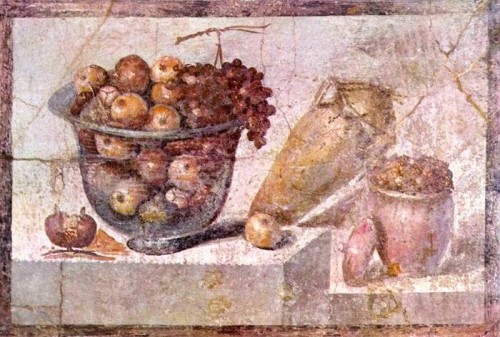
The frescoes are not scary and fading, they do not lose their pigment. Especially durable frescoes are in a dry and warm climate. Today, the frescoes can be found in museums, churches and houses with a good taste of the owners.
Installation of frescoes
In a modern living room, it is possible to make fresco mounting with one web and yourself. For this you need:
1. Prepare a wall or ceiling, process to, that is, make them smooth.
2. Apply with a painting roller on the opposite side of the glue, which glued phlizelin wallpaper.
3. Apply glue on the wall and attach cloth to it.
4. Soft roller need to remove air and extra glue from the fresco.
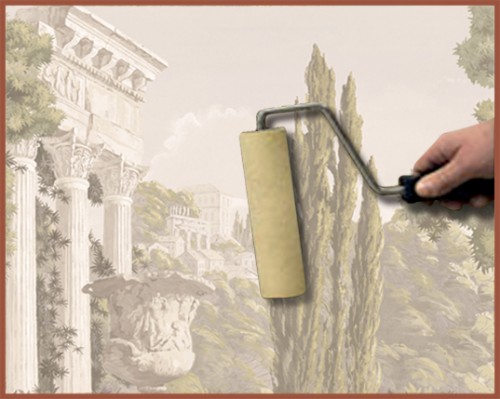
5. Crop the edges with a sharp knife.
6. The living room should be without drafts, all the doors and windows are closed.
Installation of frescoes that are cut into rolls are performed in exactly as well as one cannol with a small difference:
1. Before starting work, all rolls need to be deployed on the floor and fold the drawing.
2. To glue on the wall from the first canvas.
3. Each next roll glue into the joint with the previous one to combine the picture.
It is worth not to forget that the frescoes are well combined with large walls, so they increase the space, in small rooms, the fresco on the wall will not fit into the interior, and will only suggest space. Therefore, it is not advisable to use in small living rooms.




